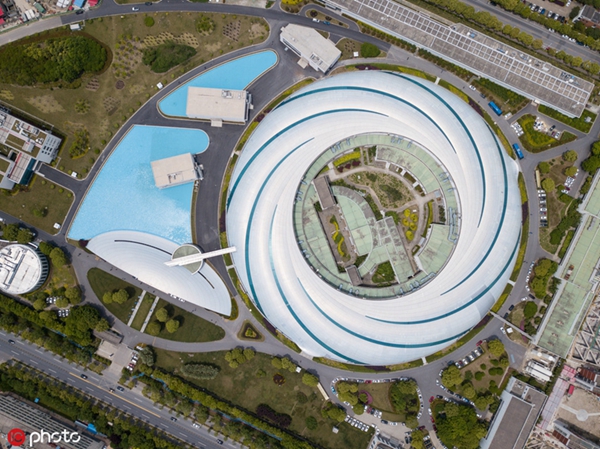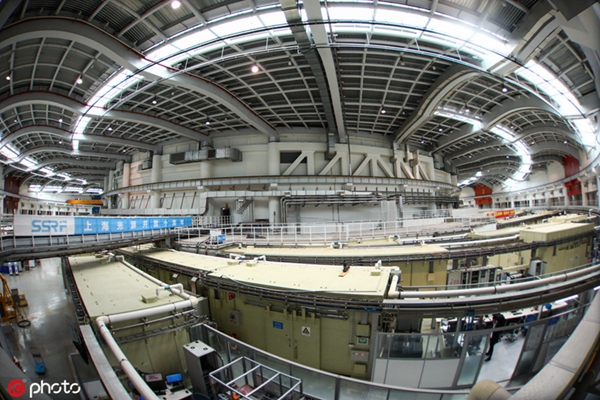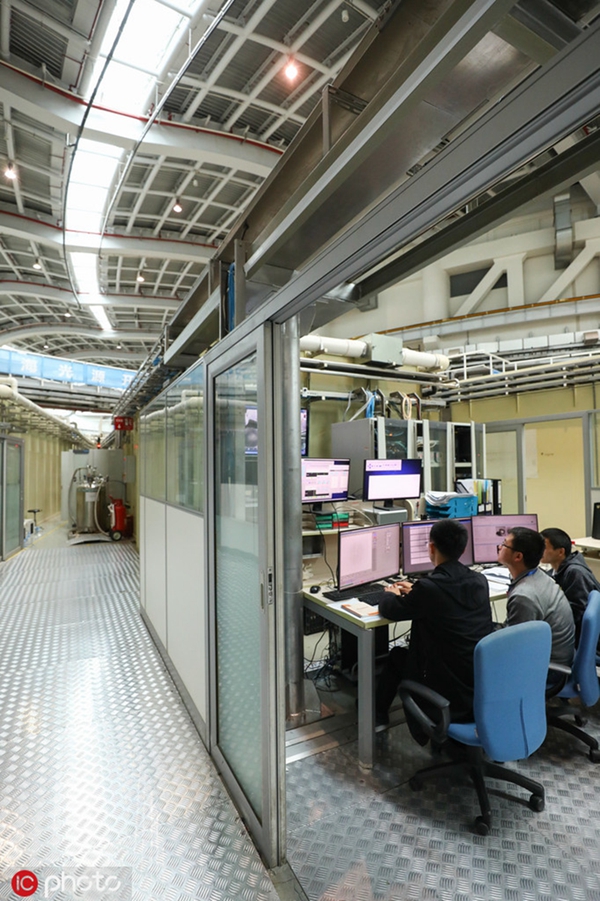Shanghai radiation facility to better serve global users

An aerial view of the Shanghai Synchrotron Radiation Facility [Photo/IC]
The Shanghai Synchrotron Radiation Facility, China's largest scientific project with the most users, has facilitated the development of cutting-edge technologies for a decade and will continue to improve its research capability for global scientific teams.
To meet the demands for synchrotron radiation light sources, a necessary experimental means for high-tech researches, there will be 40 beam lines and 60 laboratories in operation at the facility by 2022, up from the current 15 beam lines and 19 laboratories, according to the 10-year anniversary ceremony of the facility on May 6.
Since it opened in 2009, the facility has experienced a strong growth in the number of users, surging to more than 24,600 from an initial 300, including nearly 100 overseas users, mainly from the Republic of Korea, Japan, Australia and Canada.
During its 10-year operation, the facility has provided experimental platforms for over 340,000 hours and has seen a lot of achievements emerging in frontier scientific research in various fields, including life sciences, new materials, physics, chemistry, environmental sciences and archaeology.
Users of the facility have published a total of about 5,000 journal articles, including 96 papers in three top international publications - Science, Nature and Cell. Some of the results were cited among the top ten scientific breakthroughs by Science in the United States and some achievements have been voted among top ten breakthroughs by Physics World in Europe.
The facility has not only undertook a batch of construction tasks for major science and technology infrastructures in China, but also has contributed to the development of many international installations, such as the timing control of a collider developed by Korean Synchrotron Radiation Facility and Japanese SuperB factory, and an undulator developed by Korean and Canadian synchrotron radiation facilities.
With a total investment of around 13.8 billion yuan ($2.03 billion), Shanghai is planning to form a cluster of large-scale radiation scientific projects, including both the facility and new projects such as beam line stations, hard X-ray free-electron laser equipment and soft X-ray free-electron laser equipment, by 2025.

The interior design of the Shanghai Synchrotron Radiation Facility [Photo/IC]

Researchers work in the Shanghai Synchrotron Radiation Facility. [Photo/IC]

 Print
Print Mail
Mail




